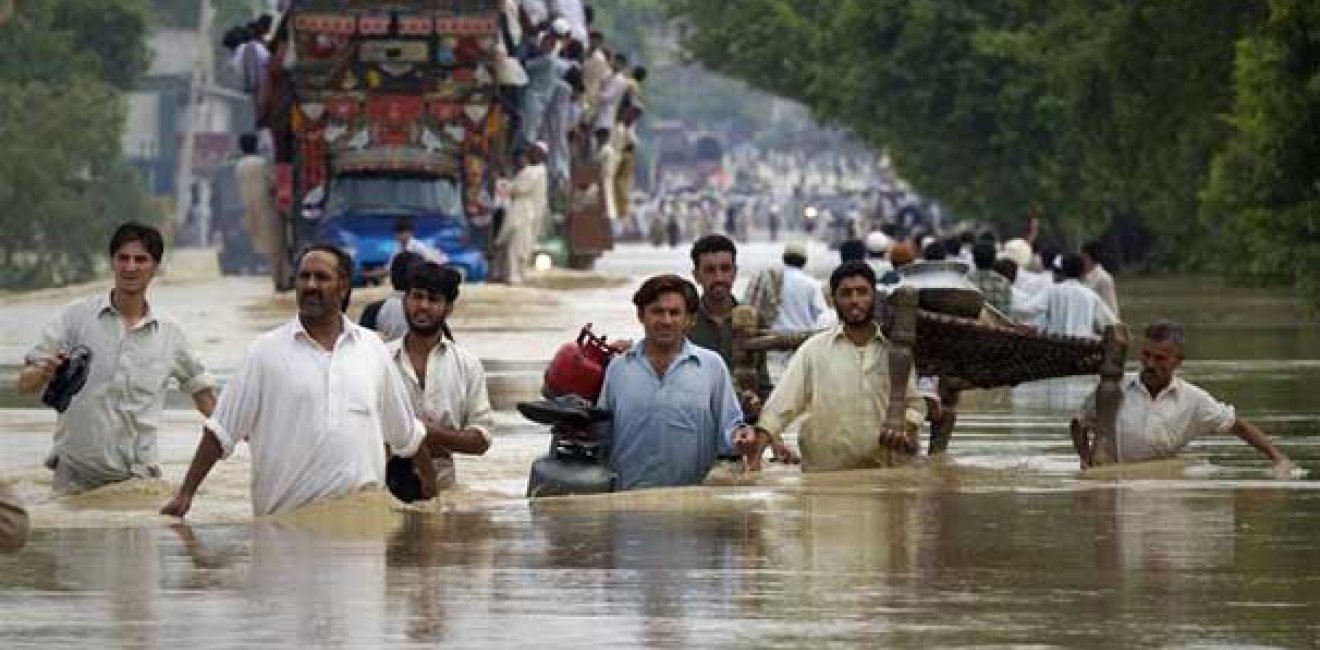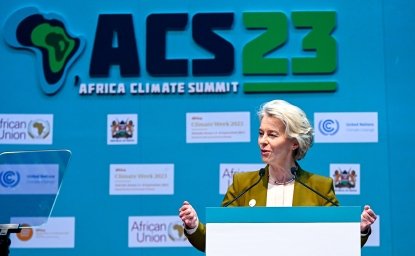Few regions are as vulnerable to the potential effects of climate change as South Asia, which means the stakes of the Paris climate conference, and its goal of a new international agreement on emissions reductions, are significant.
South Asia’s acute climate vulnerability stems from geography, demographics, and weather-related factors. Its coastal states—Pakistan, India, Bangladesh, Sri Lanka, and particularly the Maldives—are or have low-lying areas susceptible to rising sea levels. Its landlocked nations—Afghanistan, Bhutan, and Nepal—are threatened by glacial melt. A quarter of the world’s population lives in South Asia, with large shares of people in coastal regions. Much of South Asia is susceptible to extensive droughts and is ravaged by water shortages that make many people reliant on glacier snow melt for drinking water. The region also experiences torrential rains and heavy flooding.
Bangladesh has long been singled out as one of the world’s most at-risk states for climate change. Some of its neighbors can also claim this ignoble title, including Pakistan, where about 100 million people–or half of its population–are directly at risk from climate-related disasters, and India, where nearly 40 million people are at risk from sea-level rise by 2050.
There are no shortages of climate change-induced nightmare scenarios in South Asia. A catastrophic cyclone could hit the Pakistani port megacity of Karachi and trigger extensive radiation leaks at the city’s main nuclear power plant—an old and dilapidated structure that stands not 20 miles from an area that 8 million people call home.
Or imagine that devastating floods or droughts give Pakistani terrorists a pretext to accuse upper riparian India of manipulating river flows—or even to stage attacks in India.
Ironically, despite its high risk for climate-related disasters, and the poor air quality in many large cities, South Asia as a whole has a relatively light carbon footprint.
Or glacial melt could reduce river flows in Bangladesh to a trickle, prompting refugees to migrate en masse to the volatile eastern Indian state of Assam, where violent factions might target these new arrivals and long-entrenched separatist militants could exploit this unrest by launching their own attacks.
Ironically, despite its high risk for climate-related disasters, and the poor air quality in many large cities, South Asia as a whole has a relatively light carbon footprint. World Bank data put the region’s carbon emissions rate at 1.4 metric tons per capita—the smallest figure of any developing region other than sub-Saharan Africa.
South Asian countries—and developing nations around the globe—often complain that international climate negotiations are unjust because they place a large burden on countries that contributed relatively little to climate change, even as Western industrial countries were able to pollute for decades before being asked to curb their emissions.
There is truth to that argument. But the days have passed when a state—developed or developing—had the luxury of polluting now and mitigating later. This makes the challenge all the greater for negotiators in Paris to reach a meaningful and actionable agreement.
The opinions expressed here are solely those of the author.
This article was originally published in The Wall Street Journal's Washington Wire.
Photo via: Samenwerkende Hulporganisaties, CC-BY-SA 2.0








